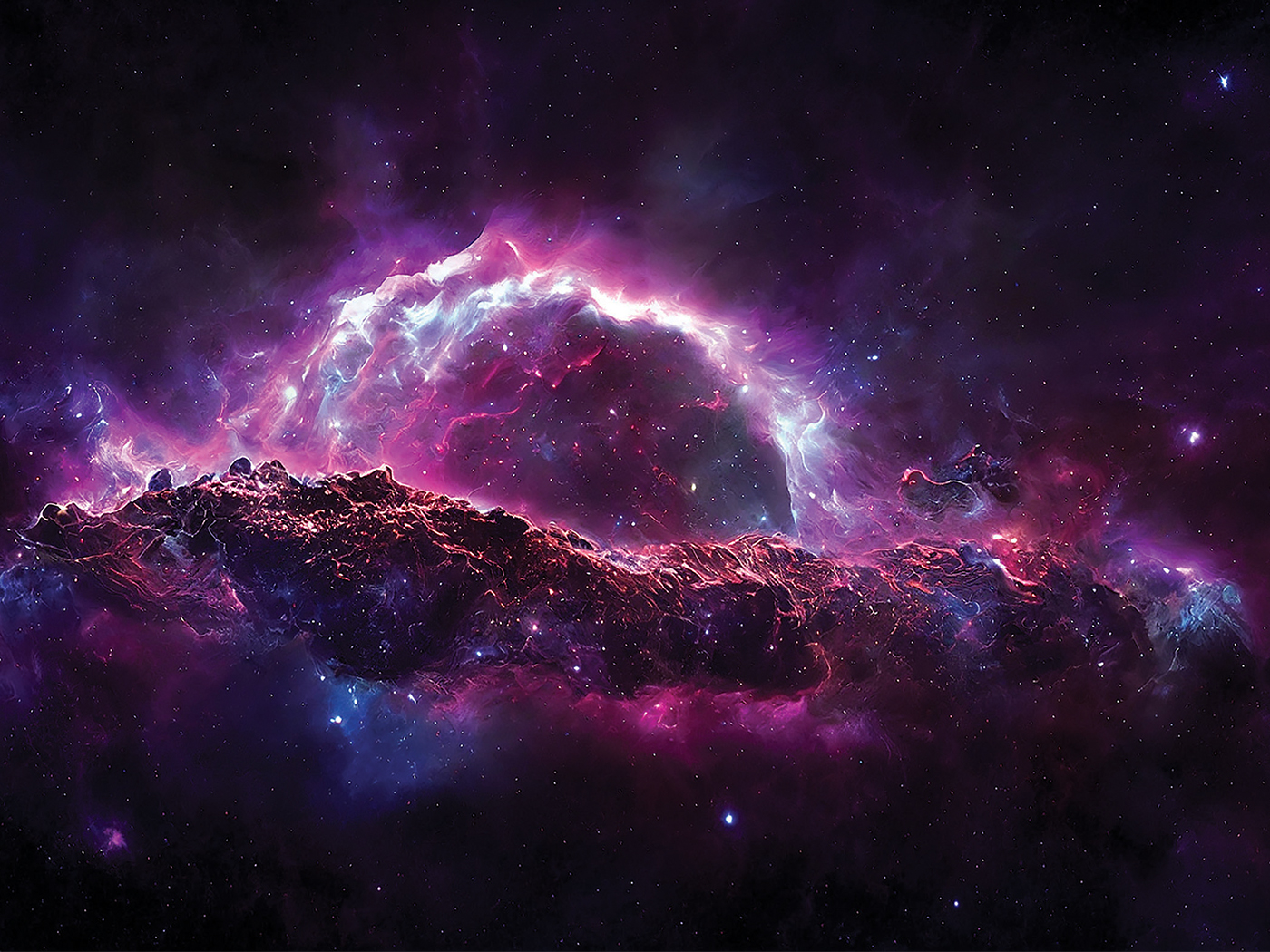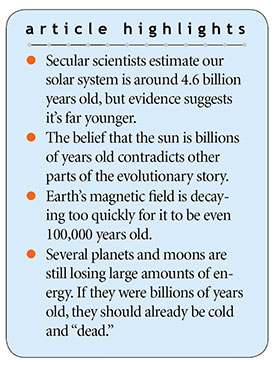 Secular astronomers insist our universe is 13.8 billion years old and our solar system is 4.6 billion years old. These claims contradict the Bible’s clear teaching of a recent six-day creation. In spite of the secular scientists’ claims, the enormous amount of data collected by unmanned space probes in the last half-century strongly confirms that the planets, moons, and comets in our solar system are quite young. Even when favorable old-universe assumptions are made, the data suggest that the maximum possible ages for these bodies are much, much younger than 4.6 billion years. And since these are maximum, not minimum, possible ages, the age estimates are consistent with a solar system that is just 6,000 years old. A number of evidences confirms this young age.
Secular astronomers insist our universe is 13.8 billion years old and our solar system is 4.6 billion years old. These claims contradict the Bible’s clear teaching of a recent six-day creation. In spite of the secular scientists’ claims, the enormous amount of data collected by unmanned space probes in the last half-century strongly confirms that the planets, moons, and comets in our solar system are quite young. Even when favorable old-universe assumptions are made, the data suggest that the maximum possible ages for these bodies are much, much younger than 4.6 billion years. And since these are maximum, not minimum, possible ages, the age estimates are consistent with a solar system that is just 6,000 years old. A number of evidences confirms this young age.
The enormous amount of data collected by space probes in the last half-century strongly confirms that the planets, moons, and comets in our solar system are quite young. ![]()
A Young Sun
As the sun “burns” its nuclear fuel, its composition gradually changes. Secular scientists believe it would have been much dimmer billions of years ago than it is today. Because of this, Earth would have received much less sunlight and been so cold it would have frozen. Although occasional reports claim this “faint young sun paradox” has been solved, the purported solutions can’t withstand scrutiny.1 Of course, this problem disappears if the sun was recently created in its current state without having to go through billions of years of change before Earth was habitable. Interestingly, famed solar astronomer John Eddy once acknowledged that observational data of the sun do not demand an age of billions of years and scientists could “live with” an age of just 6,000 years for the earth and sun.2
Planetary Magnetism
Secular scientists have enormous difficulties explaining the continued existence of Earth’s magnetic field. Such fields are caused by moving electrical charges, such as current flowing down a wire. Powerful currents in Earth’s core drive our planet’s magnetic field. However, energy losses in an electrical circuit cause currents to “run down” over time. The currents inside Earth are no exception. For this reason, its magnetic field should have disappeared long ago if it were billions of years old. Cal Tech geophysicist David Stevenson stated:
We do not understand how the Earth’s magnetic field has lasted for billions of years. We know that the Earth has had a magnetic field for most of its history. We don’t know how the Earth did that....We have less of an understanding now than we thought we had a decade ago.3
Based on historical measurements, Earth’s magnetic field is losing half its energy every 1,400 years or so. Given this rate of loss, the field’s energy would have been so great just a few tens of thousands of years ago that it would have melted the planet’s crust.4 Earth’s magnetic field must be young.
And it’s not just Earth’s field that points to a youthful age for the solar system. Physicists use a quantity called the magnetic dipole moment to indicate the strength of the biggest part of a planetary magnetic field. Secular scientists were surprised when spacecraft observations showed that Mercury, Neptune, and Uranus all had magnetic dipole moments larger than expected based on secular long-age assumptions. In fact, Mercury’s magnetic field wasn’t supposed to exist at all.5,6 Likewise, the magnetic field of Jupiter’s moon Ganymede should not still exist if it is billions of years old.7
However, using biblical, young-universe assumptions, creation physicist Russell Humphreys made multiple successful predictions about the magnetism of bodies in our solar system. He correctly estimated the magnetic dipole moments of Uranus and Neptune years before they were actually measured.5,8 He also successfully predicted a significant decrease in Mercury’s magnetic dipole moment between 1975 and 2011, a decrease that surprised secular scientists, although he underestimated the size of the decrease (8% as opposed to his predicted 4-6%).9, 10
Warm Bodies
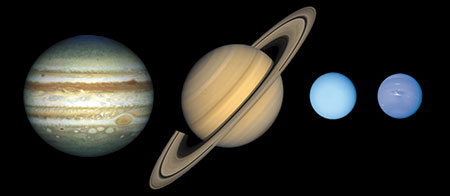
Jupiter, Saturn, Uranus, and Neptune (Figure 1) all give off more energy than they receive from the sun. If these bodies are billions of years old, why did they not become cold and dead eons ago? Secular scientists have devised a number of explanations for how these bodies could stay warm over this supposed time, but their proposed solutions have serious problems.11,12 Likewise, ongoing volcanic activity on Jupiter’s moon Io and geyser activity on Saturn’s moon Enceladus require internal energy to drive them.13,14 Although secular scientists recently claimed they can perhaps account for the energy of the moons in an old solar system, the simplest solution is that these bodies are young.
Disappearing Acts
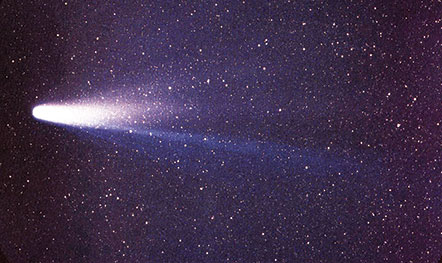
Secular scientists believe comets are leftovers from the formation of the solar system 4.6 billion years ago. Beautiful comet tails form when solar radiation causes ices on comet nuclei to vaporize as the comet draws near to the sun (Figure 2). Since comets lose material every time their elliptical orbits take them close to the sun, they should disintegrate in, at most, hundreds of thousands of years. If the solar system is billions of years old, why do all these comets still exist?
Secular astronomers claim disintegrating comets are replaced by new comets that originate from reservoirs at and beyond the edge of the solar system—the scattered disk and Oort cloud. Yet, these proposed reservoirs cannot effectively resupply the comets. Furthermore, there is no direct evidence that the Oort cloud even exists.15
Likewise, the atmosphere of Saturn’s moon Titan has to be young. Its methane is constantly being destroyed by solar ultraviolet radiation and converted into more complex organic molecules. Secular scientists estimate Titan’s atmosphere can be no more than about one billion years old even if methane from the crust were replenishing some of the lost gas.16 In the absence of a methane source, Titan’s atmosphere can be no more than 10 to 100 million years old.17
A Young, Active Moon
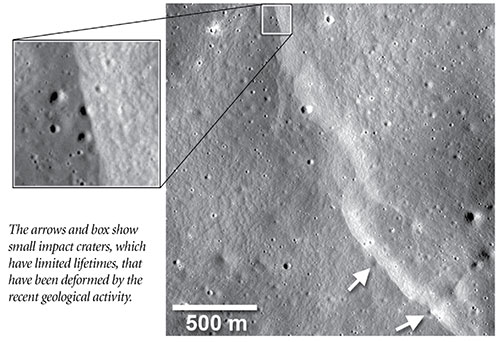
Embankments called scarps on our moon’s surface are thought to be caused by shrinkage resulting from a cooling crust (Figure 3). Photographs reveal that these scarps contain deformed, small, pre-existing craters. Since small craters tend to be destroyed by later meteorite impacts, the craters are thought to be fairly young, which would make the scarps even younger.
But this implies that the moon cooled fairly recently, in spite of the fact that secular scientists long claimed the moon had been geologically cold and dead for at least the last three billion years.18
In fact, there is tantalizing evidence that the moon is still geologically active. Over the years, observers have reported seeing flashes of light, hazes, and color changes on the moon, which could be the result of recent volcanic eruptions and gases escaping from the crust.19
Young Surfaces
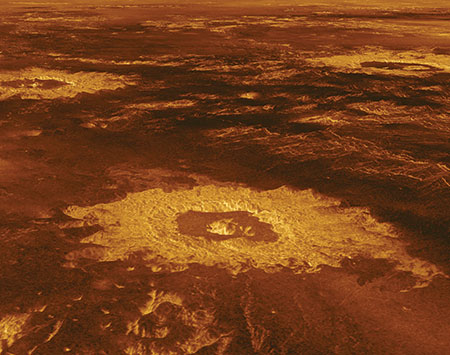
Saturn’s rings are continually bombarded by micrometeorites, which should turn the icy rings dark and sooty over time. Yet, they are still shiny and clean-looking. Even secular scientists have been forced to concede that the rings cannot possibly be more than 300 million years old.20 Similarly, the distribution of craters on Venus caused secular scientists to conclude that its surface is relatively young—about 700 million years old (Figure 4).21
Such scientists were shocked when images taken by the New Horizons spacecraft showed that the dwarf planet Pluto is still geologically active, despite its small size (Figure 5). This activity requires internal energy to drive it, but secular astrophysicists don’t know how tiny, distant Pluto could have maintained this energy for billions of years.22
Since the Creator Himself has testified in His Word that He created everything recently, should we really be surprised that the scientific data confirm this? ![]()
Conclusion
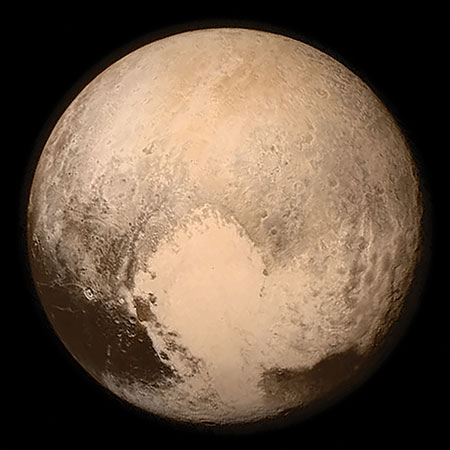
There are many more evidences of youth inside and outside our solar system, and we encourage interested readers to read more at ICR.org. Since the Creator Himself has testified in His Word that He created everything recently, should we really be surprised that the scientific data confirm this?
_____________________________
What about Arguments for an Old Universe?
One major argument for “deep time” is that radioisotope dating methods imply vast age estimates for volcanic rocks. A second argument involves the fact that distant galaxies are billions of light-years away from us. Since the speed of light, though very fast, is finite, secular scientists assume that this light must have taken billions of years to reach Earth.
However, creation scientists have shown that the main assumptions behind radioisotope dating are quite suspect.23 Likewise, they have proposed a number of possible solutions to the “distant starlight” problem (likely involving Einstein’s relativity theory).24 Indeed, the most popular version of the Big Bang model has its own version of this problem, which is the main reason secular cosmologists “tacked on” inflation theory to the model.25 Inflation theory, though, has become so strange that even secular scientists harshly criticize it.26
References
- Thomas, B. If Earth Is Old, It Should Have Frozen. Creation Science Update. Posted on ICR.org October 24, 2016, accessed July 5, 2018.
- John A. Eddy, quoted by R. G. Kazman. 1978. It’s About Time: 4.5 Billion Years. Geotimes. 23: 18.
- Folger, T. Journeys to the Center of the Earth: Our planet’s core powers a magnetic field that shields us from a hostile cosmos. But how does it really work? Discover. July/August 2014.
- Humphreys, D. R. 2008. The Creation of Cosmic Magnetic Fields. In Proceedings of the Sixth International Conference on Creationism. A. A. Snelling, ed. Pittsburgh, PA: Creation Science Fellowship and Dallas, TX: Institute for Creation Research, 213-230.
- Humphreys, D. R. 1990. Beyond Neptune: Voyager II Supports Creation. Acts & Facts. 19 (5).
- Choi, C. Q. The Enduring Mysteries of Mercury. LiveScience. Posted on livescience.com January 14, 2008, accessed December 13, 2017.
- Williams, M. Jupiter’s moon Ganymede. PhysOrg. Posted on phys.org October 16, 2015, accessed May 29, 2018.
- Humphreys, D. R. 1984. The Creation of Planetary Magnetic Fields. Creation Research Society Quarterly. 21 (3): 140-149.
- Humphreys, D. R. 2012. Mercury’s magnetic field is fading fast—latest spacecraft data confirm evidence for a young solar system. Journal of Creation. 26 (2): 4-6.
- Dr. Humphreys also used young-universe assumptions to make successful predictions that Earth’s volcanic rocks would show rapid “flips” or “reversals” of Earth’s magnetic field. See Humphreys, D. R. 1986. Reversals of the Earth’s Magnetic Field During the Genesis Flood. In Proceedings of the First International Conference on Creationism. R. E. Walsh, C. L. Brooks, and R. S. Crowell, eds. Pittsburgh, PA: Creation Science Fellowship, 113-123. See also Humphreys, D. R. 1990. Physical Mechanism for Reversals of the Earth’s Magnetic Field During the Flood. In Proceedings of the Second International Conference on Creationism. R. E. Walsh and C. L. Brooks, eds. Pittsburgh, PA: Creation Science Fellowship, 129-140.
- Samec, R. 2000. The age of the jovian planets. Journal of Creation. 14 (1): 3-4.
- Psarris, S. 2002. Neptune: monument to creation. Creation. 25 (1): 22-24.
- Thomas, B. Despite “Magma Ocean” Discovery, Io’s Volcanic Heat Remains a Mystery. Creation Science Update. Posted on ICR.org May 23, 2011, accessed July 6, 2018.
- Thomas, B. Solar System Geysers—Each a Fountain of Youth. Creation Science Update. Posted on ICR.org August 8, 2014, accessed July 6, 2018.
- Spencer, W. 2014. Critique of Modern Oort Comet Theory. Creation Research Society Quarterly. 50 (3): 146-153.
- Steigerwald, B. NASA Research Estimates How Long Titan’s Chemical Factory Has Been in Business. NASA. Posted on nasa.gov April 24, 2012, accessed July 5, 2018.
- Atreya, S. K. The Mystery of Methane on Mars and Titan. Scientific American. Posted on scientificamerican.com January 15, 2009, accessed July 5, 2018.
- Walker, T. 2010. NASA pictures support biblical origin for moon. Journal of Creation. 24 (3): 8-10.
- Middleburst, B. et al. 1968. NASA Technical Report R-277: Chronological Catalog of Reported Lunar Events. Washington, DC: National Aeronautics and Space Administration.
- Hebert, J. Secular Scientists Dumbfounded by Saturn’s Young Rings. Creation Science Update. Posted on ICR.org January 8, 2018, accessed May 29, 2018.
- Thomas, B. Most of Venus’ History Is Missing? Creation Science Update. Posted on ICR.org January 31, 2014, accessed July 5, 2018.
- Lisle, J. Looking Back at Pluto. Creation Science Update. Posted on ICR.org May 31, 2016, accessed July 10, 2018.
- Vardiman, L. et al. 2003. Radioisotopes and the Age of the Earth. In Proceedings of the Fifth International Conference on Creationism. R. L. Ivey Jr., ed Pittsburgh, PA: Creation Science Fellowship, 337-348.
- Vardiman, L. and D. R. Humphreys. 2010. A New Creationist Cosmology: In No Time at All Part 1. Acts & Facts. 39 (11): 12-15.
- Coppedge, D. F. 2007. The Light-Distance Problem. Acts & Facts. 36 (6).
- Hebert, J. Big Bang Blowup at Scientific American. Creation Science Update. Posted on ICR.org May 29, 2017, accessed July 5, 2018.
* Dr. Hebert is Research Associate at the Institute for Creation Research and earned his Ph.D. in physics from the University of Texas at Dallas.





